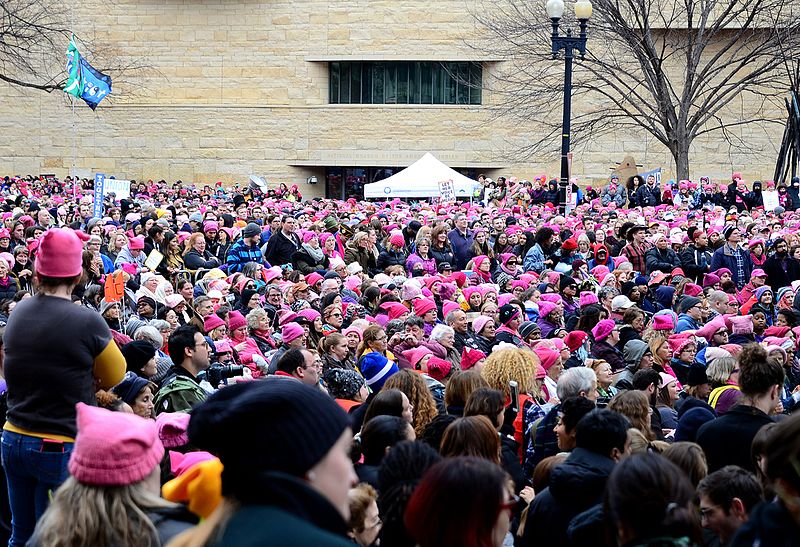Was it just my imagination, or was there a whiff of “colour revolution” in the air yesterday south of the Medicine Line?
Yesterday was the first full day of Donald J. Trump’s first term as President of the United States, and he was promptly and perhaps prudently off to visit the offices of the Central Intelligence Agency, thought by some to be our planet’s No. 1 fomenter and organizer of so-called colour revolutions.
Trump’s first presidential stopover in Langley, Va., may show “marks of foresight, beginnings of wit,” as the great Canadian poet Milton Acorn described such inklings, or merely that the newly sworn-in blowhard still confidently believes he can fool anyone.
Just a week ago, Trump was comparing the CIA and the rest of the Unites States’ organs of state security to the Nazis, as the New York Times pointedly reminded readers yesterday.
It’s hard to believe the agency’s presumably nervous leaders were much reassured when President Trump told 300 employees that, “I love you, I respect you, there’s nobody I respect more.”
I suspect more than a few found the president’s performance insufficiently obsequious. Tellingly, the just-retired director of the CIA, John Brennan, dismissed Trump’s speech in the CIA Memorial Hall as a “despicable display of self-aggrandizement.”
Legally, of course, the CIA is not permitted to meddle in political matters within the borders of the United States. Technically, that is the bailiwick of the Federal Bureau of Investigation, whose director has already done his meddling, rather to Trump’s advantage, it would seem.
Illegally is another matter of course, and even if only a vague possibility, it is one that an incoming president hostile to significant portions of the American establishment, including many within his own party, might be advised to mind. As the old joke goes, they never have coups and colour revolutions in Washington because there’s no U.S. Embassy there. Perhaps that’s good enough for the ever-confident Trump.
Colour revolutions, as the Wikipedia accurately describes them, are upheavals most often associated with societies in the former Soviet Union and the Balkans involving strikes, mass demonstrations and other interventions against governments seen as corrupt or authoritarian. “These movements generally adopted a specific colour or flower as their symbol,” the article notes, again accurately.
The frenzy whipped up between November’s presidential election and yesterday’s inauguration about allegations, based on rather flimsy evidence, that Trump’s victory was the result of Russian interference in the U.S. electoral process certainly had the quality of the rhetoric that has preceded colour revolutions elsewhere.
This left some to wonder not so much whether the U.S. would have one — fomented perhaps, or perhaps not, by the usual suspects — but only what colour the revolutionaries would choose.
Judging by the huge and defiant women’s rallies in Washington and many cities both within and beyond the United States yesterday, the colour might be pink. In Manhattan, the Times reported, “Fifth Avenue became a tide of signs and symbolic pink hats.”
It isn’t just about Trump, of course. As Edmonton Strathcona NDP MP Linda Duncan told the CBC yesterday at Edmonton’s march, which was attended by more than 6,000 people, “they’re fed up with the misogyny they are hearing here, even in Edmonton.” It is no secret that women politicians have borne a tide of hostility and abuse by Alberta’s right wing.
There is no possibility, of course, that Trump can keep many of the promises he has made — certainly not within the bounds of the U.S. Constitution, who a lot more people than the president himself have sworn to uphold.
So the key questions are how President Trump will try to distract from that reality as it quickly and inevitably becomes apparent, how his many opponents will react to whatever he does, and just who his enemies will turn out to be.
The far right often assumes people who believe in human rights and due process are never up to a fight. We’ve all heard the snowflake commentary on both sides of the world’s longest undefended border. History shows pretty clearly that’s a risky assumption for the authoritarian right to make.
Once it’s out, it may not be so easy to put this genie back in its bottle. Whatever happens, it won’t be what you expect. We’re in for a wild ride.
This post also appears on David Climenhaga’s blog, AlbertaPolitics.ca.
Like this article? Please chip in to keep stories like these coming.



